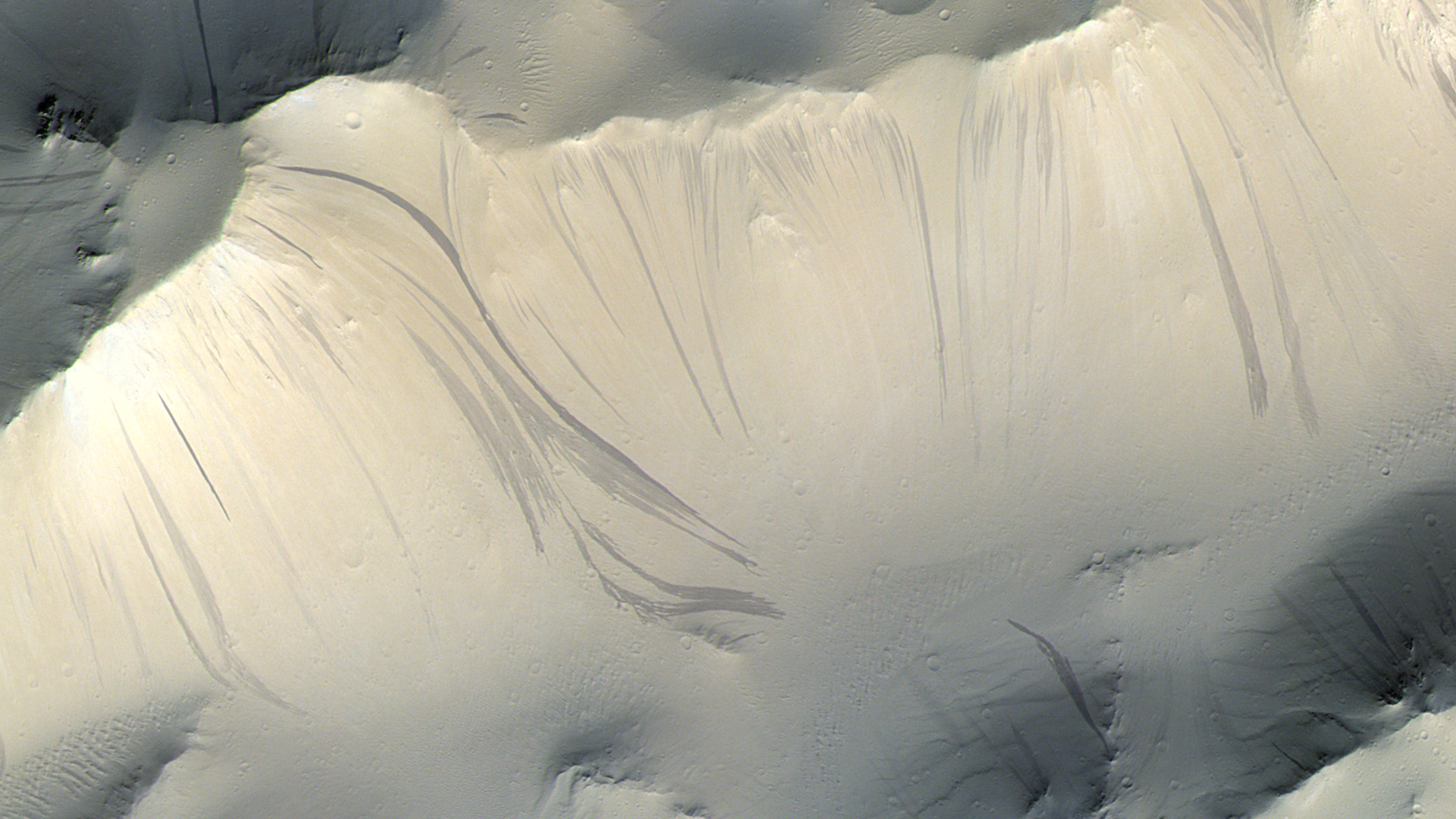Alas, these probably are not reservoirs of life.

This image covers an area of approximately 50 square km on Mars.
Credit: European Space Agency
Welcome to the Tuesday Telescope. There is a little too much darkness in this world and not enough light—a little too much pseudoscience and not enough science. We’ll let other publications offer you a daily horoscope. At Ars Technica, we’ll take a different route, finding inspiration from very real images of a universe that is filled with stars and wonder.
One of the longest-standing mysteries about Mars has been the presence of dark and light streaks on the rolling hills surrounding Olympus Mons. This week's image, from the European Space Agency, shows some of these streaks captured last October.
This massive mountain rises about 22 km above the surface of Mars, more than twice as high as Mount Everest on Earth. It is bordered by hummocky deposits, called aureoles, that were formed by landslides from the mountain. A striking feature of these aureoles is the periodic appearance of bright and dark streaks—sometimes for days and sometimes for years.
For decades, scientists have wondered what they might be.
The streaks look remarkably like flowing water. Initially, scientists believed these features might be flows of salty water or brine, which remained liquid long enough to travel down the aureole. This offered the tantalizing possibility that life might yet exist on the surface of Mars in these oases.
However, it now appears that this is not the case. According to new research published Monday in the journal Nature Communications, these slopes are dry, likely due to layers of fine dust suddenly sliding off steep terrain. To reach this conclusion, the researchers used a machine-learning algorithm to scan and catalog streaks across 86,000 satellite images from NASA's Mars Reconnaissance Orbiter. They created a map of 500,000 streaks across the surface of Mars. In doing so, the researchers found no evidence of water.
The image in today's post comes from the European Space Agency's ExoMars Trace Gas Orbiter, and it has been slightly modified to enhance the appearance of the streaks. It looks like art.
Source: European Space Agency
Hope you enjoyed this news post.
Thank you for appreciating my time and effort posting news every day for many years.
News posts... 2023: 5,800+ | 2024: 5,700+ | 2025 (till end of April): 1,811
RIP Matrix | Farewell my friend ![]()


3175x175(CURRENT).thumb.jpg.b05acc060982b36f5891ba728e6d953c.jpg)
Recommended Comments
There are no comments to display.
Join the conversation
You can post now and register later. If you have an account, sign in now to post with your account.
Note: Your post will require moderator approval before it will be visible.